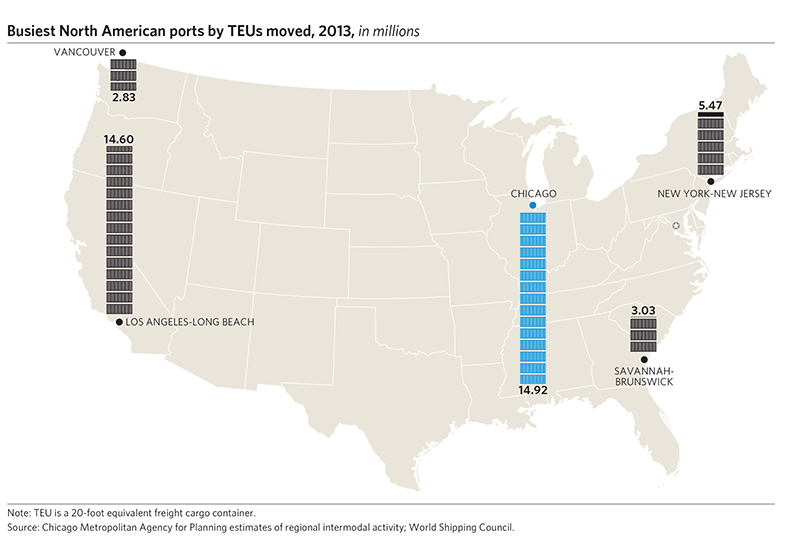Freight and manufacturing clusters play significant roles in metropolitan Chicago's economy. These sectors represent 15 percent of the region's jobs and have helped make metropolitan Chicago the busiest rail-tuck intermodal port in the U.S., ahead of both Los Angeles-Long Beach and New York-New Jersey. Measures related to these clusters are now available on CMAP's regional economic indicators microsite , which CMAP launched on July 7, 2014 with data and analysis on broad economic trends, followed by analysis of the region's workforce released on July 14. The rollout continues this week with the release of clusters indicators – intermodal lifts, manufacturing and freight cluster employment and industry location quotients, and manufacturing exports.
The Chicago region moved approximately 14.2 million twenty-foot equivalent units (TEUs) of freight cargo containers through its rail-truck intermodal facilities in 2012. Freight movement in the region increased by roughly 19 percent from 2009-12, and in 2013 over $34 billion worth of manufactured goods were exported from the Chicago customs district.
The freight cluster grew 7.6 percent in the past decade, faster than the national average, and added over 21,000 jobs between 2003-13. Manufacturing, on the other hand, has been slow to recover from the most recent recession. It has seen only modest employment growth in recent years, and post-recession growth of exports has lagged behind the national average.
CMAP will conclude its rollout by releasing indicators and analysis on innovation next Monday, July 28. Throughout the year, CMAP will post Policy Updates using these and related indicators to provide more in-depth analysis on various phenomena affecting the region's economic performance. The microsite's indicators will be updated annually as data becomes available.
